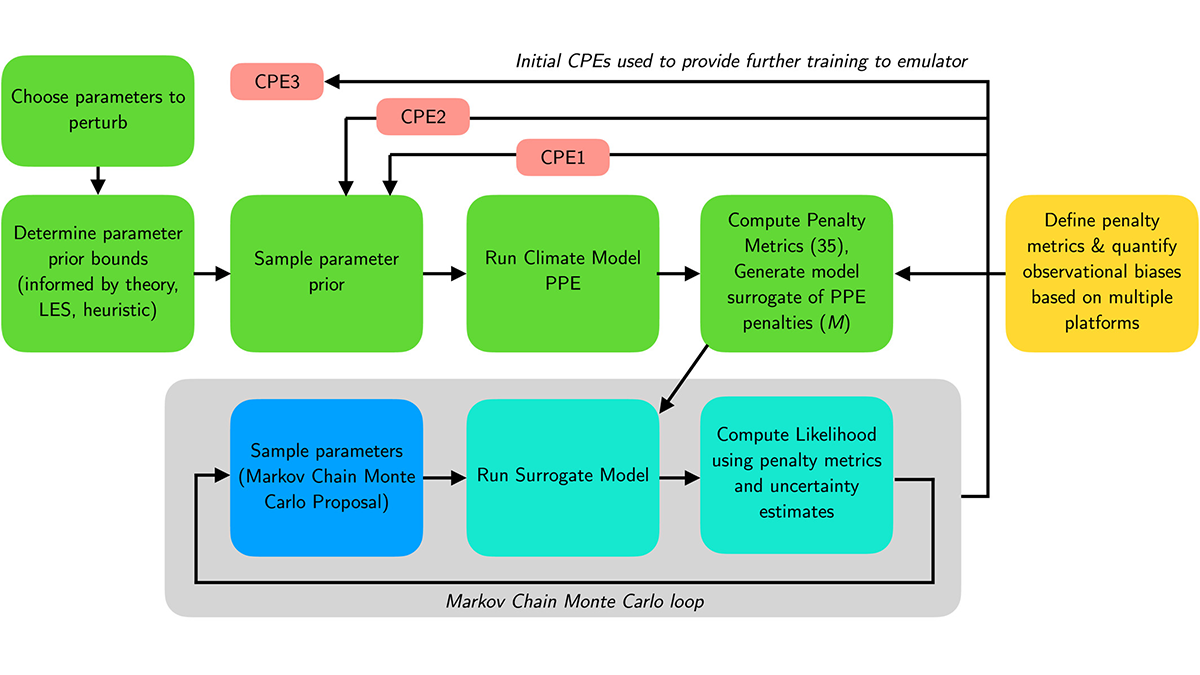Editors’ Highlights are summaries of recent papers by AGU’s journal editors.
Source: Journal of Advances in Modeling Earth Systems
Climate models are essential tools for understanding and predicting our planet, but accurately setting their many internal parameters is complex and has been a labor-intensive manual task in the past.
Elsaesser et al. [2025] showcase a method using machine learning to automatically tune, or “calibrate,” the NASA GISS climate model against real-world observations. The authors develop a neural network surrogate of GISS ModelE to efficiently explore different parameter settings, creating a collection of well-performing model versions known as a calibrated physics ensemble. A key success was significantly improving the model’s simulation of challenging features such as shallow cumulus clouds and Amazon rainfall—longstanding modeling challenges—without negatively impacting, for example, radiation fields.
This work represents an important advance, moving automated calibration techniques from theoretical research into practical application for large-scale climate modeling. It brings us an essential step closer to more trustworthy climate predictions.
Citation: Elsaesser, G. S., van Lier-Walqui, M., Yang, Q., Kelley, M., Ackerman, A. S., Fridlind, A. M., et al. (2025). Using machine learning to generate a GISS ModelE calibrated physics ensemble (CPE). Journal of Advances in Modeling Earth Systems, 17, e2024MS004713. https://doi.org/10.1029/2024MS004713
—Tapio Schneider, Editor, JAMES

